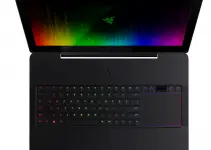All of the Internet is still roaring after the unveiling of the brand new Mac Pro at the WWDC19 by Apple. Beyond any doubt, it’s a beautiful machine that many post-production companies will be evaluating if it’s worth upgrading to. But for the smallest independent filmmakers often the choice is on more earthly machines, sometimes with a little bit of do-it-yourself if you aim at a Windows workstation and want the most bang for your buck.
But if you are locked in the Apple ecosystem, or you simply enjoy the beauty and ease of using MacOS, then chances are you would be comparing two particular offerings – the iMac and MacBook Pro. Apple recently upgraded both of them, and who can be a better judge their video editing performance than Max Yuryev himself?
Many will simply say that if your workflow is portable-driven and you need to move around a lot such as going to clients, commuting between different locations or you just travel a lot, there is no need to go on reading, there is an easy choice for you and that is the MacBook Pro.
If instead, you have an office or a desk where you sit every time to edit, well, that’s it, get the iMac. But there’s more to that. As small independent filmmakers, many of us will be struggling between the desire of portability and the fear of lackluster performances that usually go with it.
You want to double or triple-check before investing such quantities of money, that granted, are not huge as those needed for an iMac Pro or even the unreal Mac Pro, but still may be a big enough dent in the yearly budget. So setting aside the obvious, let’s look at the performances of these machines. You know the drill, we go on synthetic benchmarks and then move on to editing performances.
The configurations of these two machines (although quite different) are actually in the same budget dollar per dollar. Both have nice configurations with the newest CPUs, powerful graphics, and RAM.
Spoiler alert, some results will not be what you’d expect. In some situations, the MacBook Pro will outperform the iMac being twice as fast. But let’s get there in order and that means benchmarks.
Testing the CPUs will confirm what we could imagine, the iMac is slightly outperforming the laptop due to its better cooling system that allows for a more sustained clock speed throughout the test keeping a 30% advantage.
In the graphics compartment the higher level card and the dedicated memory, 8GB on the iMac versus the 4GB on the MBP, make the gap even wider between the two. The iMac, in fact, doubles the results of the MacBook Pro.
Moving to the editor section the first results are actually a testament to the better software optimization that Apple and Blackmagic have been doing in comparison to Adobe.
The iMac and it’s superior GPU are still having the upper hand, but the difference in time results in simple stabilization is almost embarrassing when performing it in Premiere Pro CC. Let’s make one thing clear, though: both these machines have great timeline performances.
Moving to an 8-bit H265 XAVC codec we have a surprise. The MacBook Pro jumps ahead having a better performance than the iMac. How can that be the outcome one may ask?
The answer is under the hood in the T2 chip. This is a dedicated chip Apple uses to manage encryption on the laptop, but it also doubles as hardware acceleration for H.265 streams, giving us so much of an advantage over the Macs that are not equipped with it.
Unfortunately, Premiere Pro CC does not seem to make use of it, thus leaving the MBP in the second spot. This is, strangely, not the case for the MacBook Pro and Premiere Pro CC when exporting 10-bit H.265 footage, that instead has the upper hand here, although it’s not clear what kind of acceleration it’s using to achieve such results.
Moving to higher-end codecs, the situation gets back to normal. The iMac climbs back on top when it comes to processing the RAW footage from the C200.
Generally speaking, the iMac outperforms the MBP, as it should be, on footage that requires a higher graphics computational power like the Raw files from the C200 or RED Raven. For instance, when editing RED Raw footage in Premiere Pro CC, the iMac is three times faster than the MBP.
In conclusion, the results seem to more or less be as we expected, with a notable exception being workflows based on H265 files. If that is the case for you, then you should consider using the MacBook Pro to take advantage of that hardware acceleration. Otherwise, especially if you can compromise on portability, you would be better off with an iMac.
[source: Max Yuryev]
B&H Order Links:
Apple 15.4″ MacBook Pro with Touch Bar (Mid 2019, Space Gray)
Apple 27″ iMac with Retina 5K Display (Early 2019)
Disclaimer: As an Amazon Associate partner and participant in B&H and Adorama Affiliate programmes, we earn a small comission from each purchase made through the affiliate links listed above at no additional cost to you.
Claim your copy of DAVINCI RESOLVE - SIMPLIFIED COURSE with 50% off! Get Instant Access!




